Abstract
OBJECTIVES: Radium induces bone sarcomas at high doses, but there is controversy about risk at low doses. A previous study in Ontario found an association between the presence of radium in birthplace water supplies and an increased risk of death from bone cancer in young people. An investigation was performed to test the findings of the previous study with an independent group of subjects for whom complete information on radium exposure would be obtained. METHODS: A population based case-control study (238 cases; 432 controls) was conducted with incident cases of bone sarcoma identified from the Ontario cancer registry. Residential histories were collected by questionnaire and water samples were obtained and analysed for radium content. RESULTS: There was an association between risk of osteosarcoma and birthplace exposures (odds ratios (ORs) and 90% confidence intervals (90% CIs) 1.77 (1.03-3.00) but not with lifetime measures of exposure. When lifetime exposure was dichotomised, the OR was 1.31 (0.76-2.24) for osteosarcoma. There was no trend with increasing exposure. Bootstrap resampling was used to simulate lifetime doses in a pooled analysis of 1293 subjects from the two Ontario studies. The ORs were 1.38 (1.08-1.73) for all sarcomas, and 1.44 (1.01-1.87) for osteosarcoma. Geometric mean doses in bone were about 26 mRad. CONCLUSIONS: An association was found between the presence of radium in birthplace water supplies and increased risk of bone sarcoma in two studies. Increased risk was present for lifetime measures of exposure, but the association was not significant, and there was no dose-response trend. Our findings are compatible with the absence of risk at low doses, but they might also reflect inadequate statistical power to measure a true risk at environmental exposure levels. If the increased risk at environmental doses is causal, risk of bone sarcoma is effectively linearly related to dose over five orders of magnitude.
Full text
PDF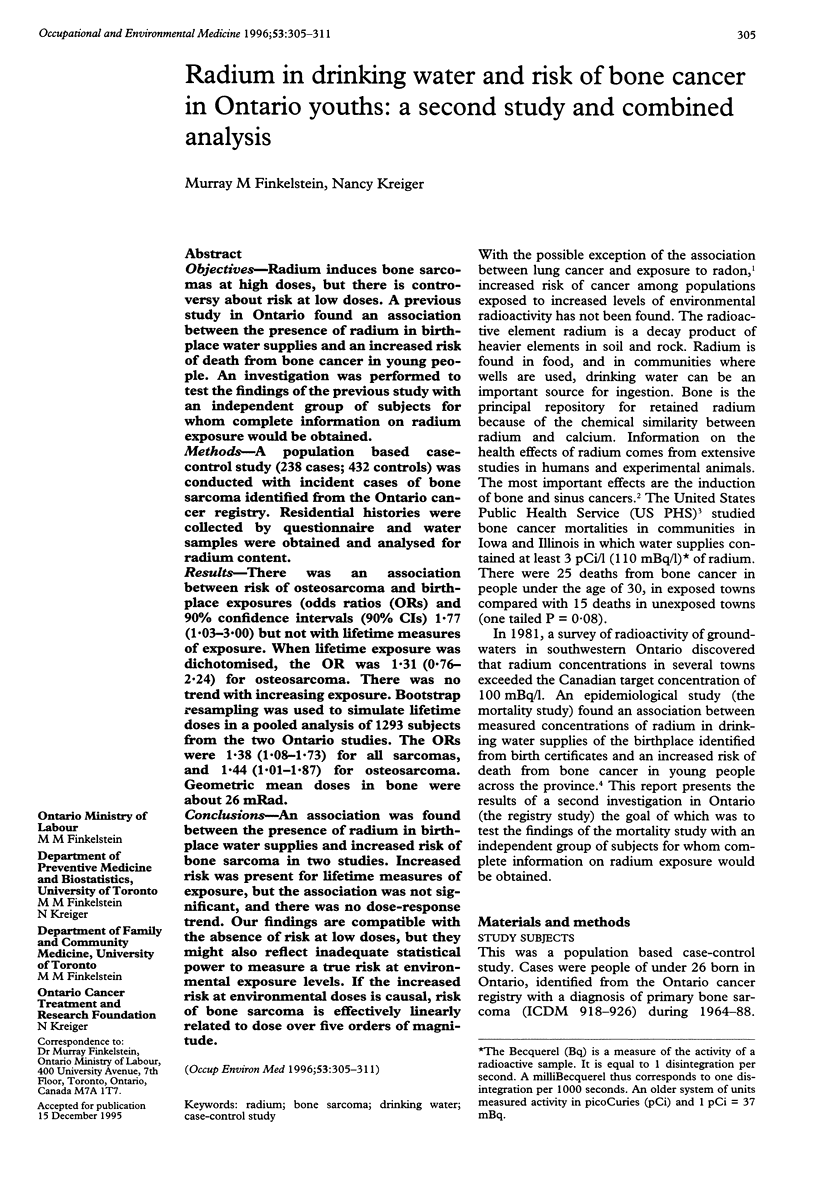
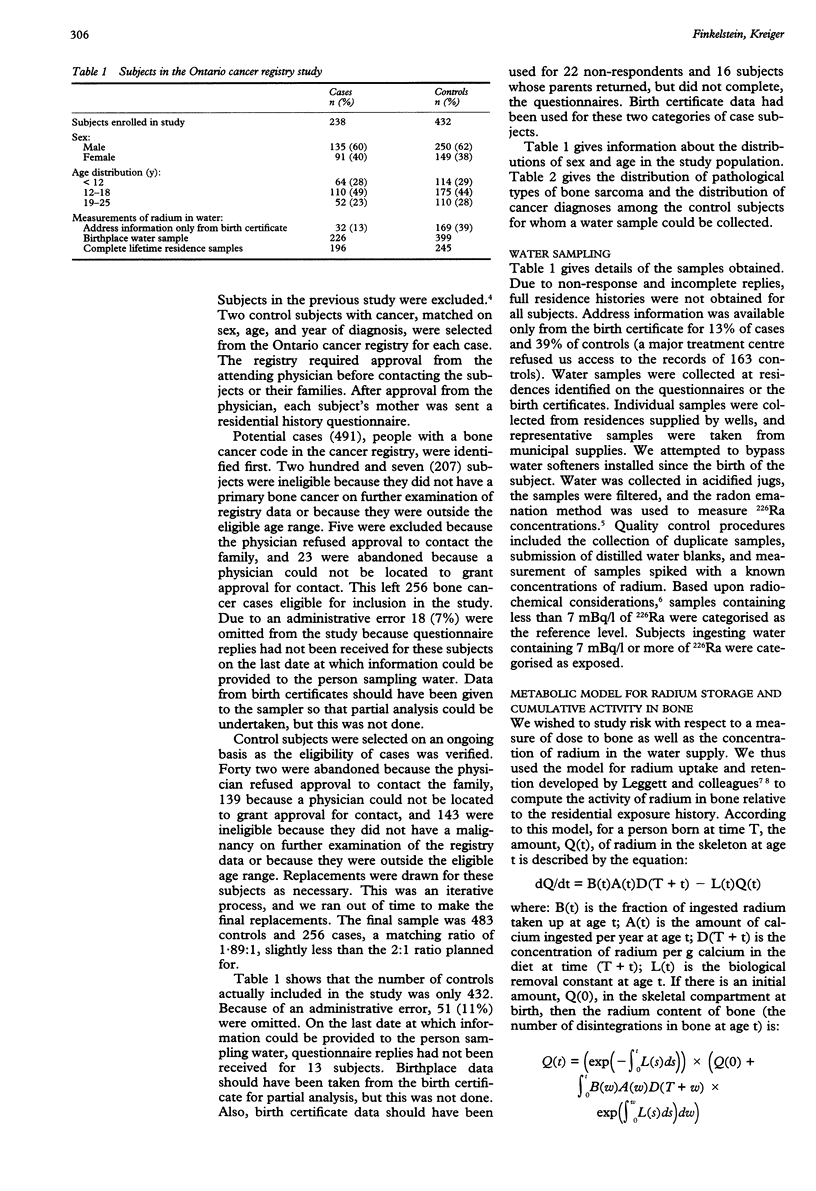
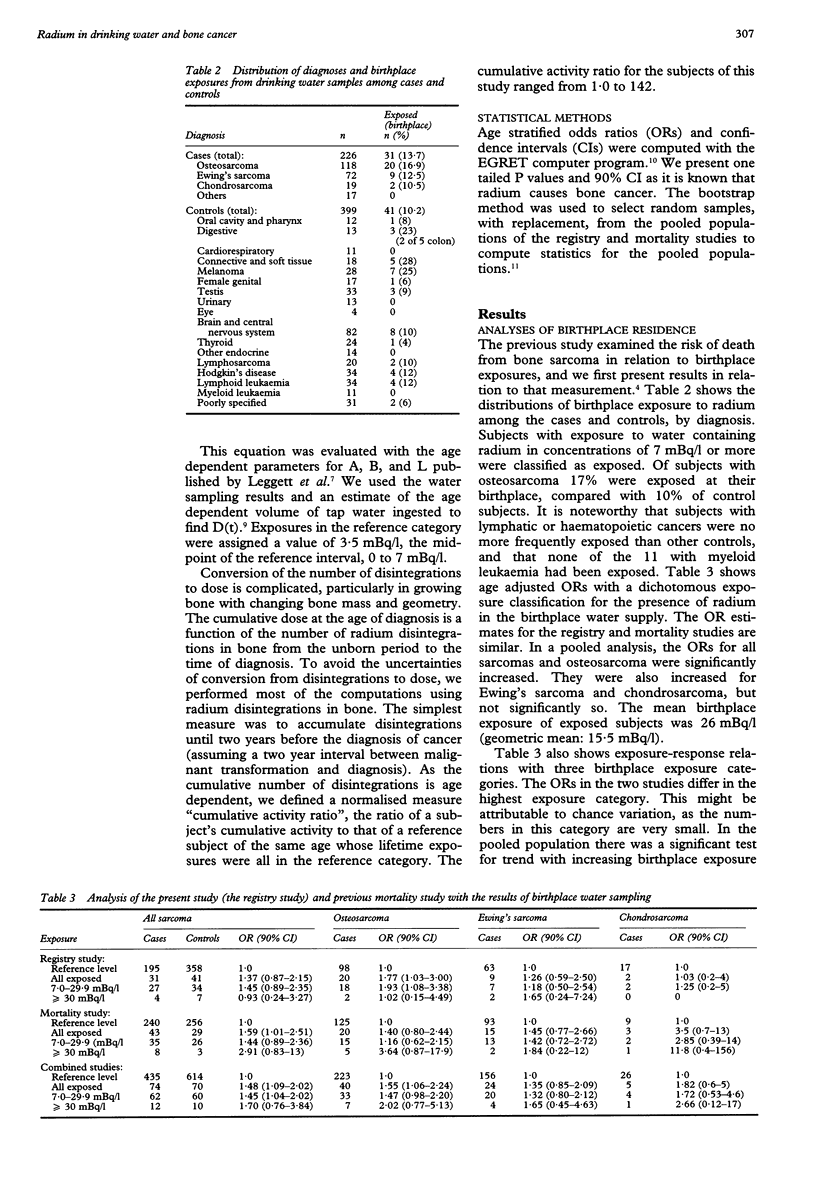
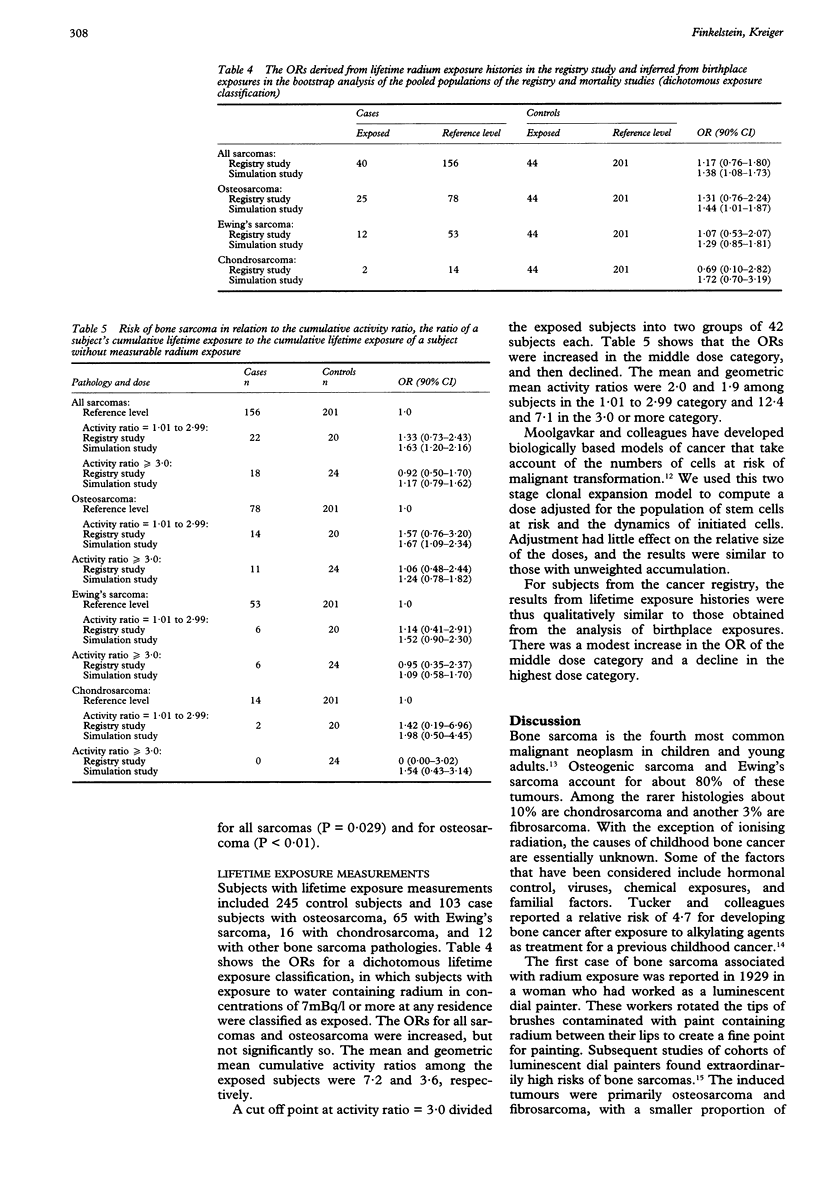
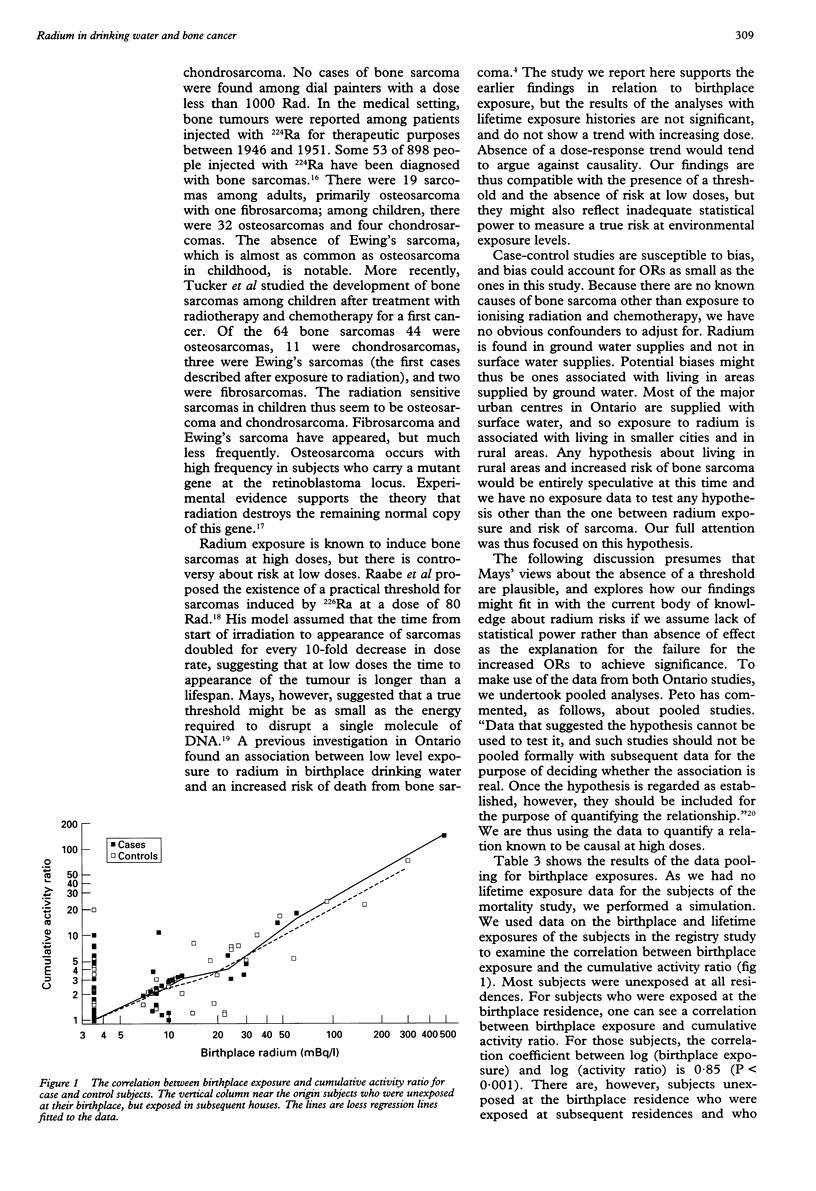
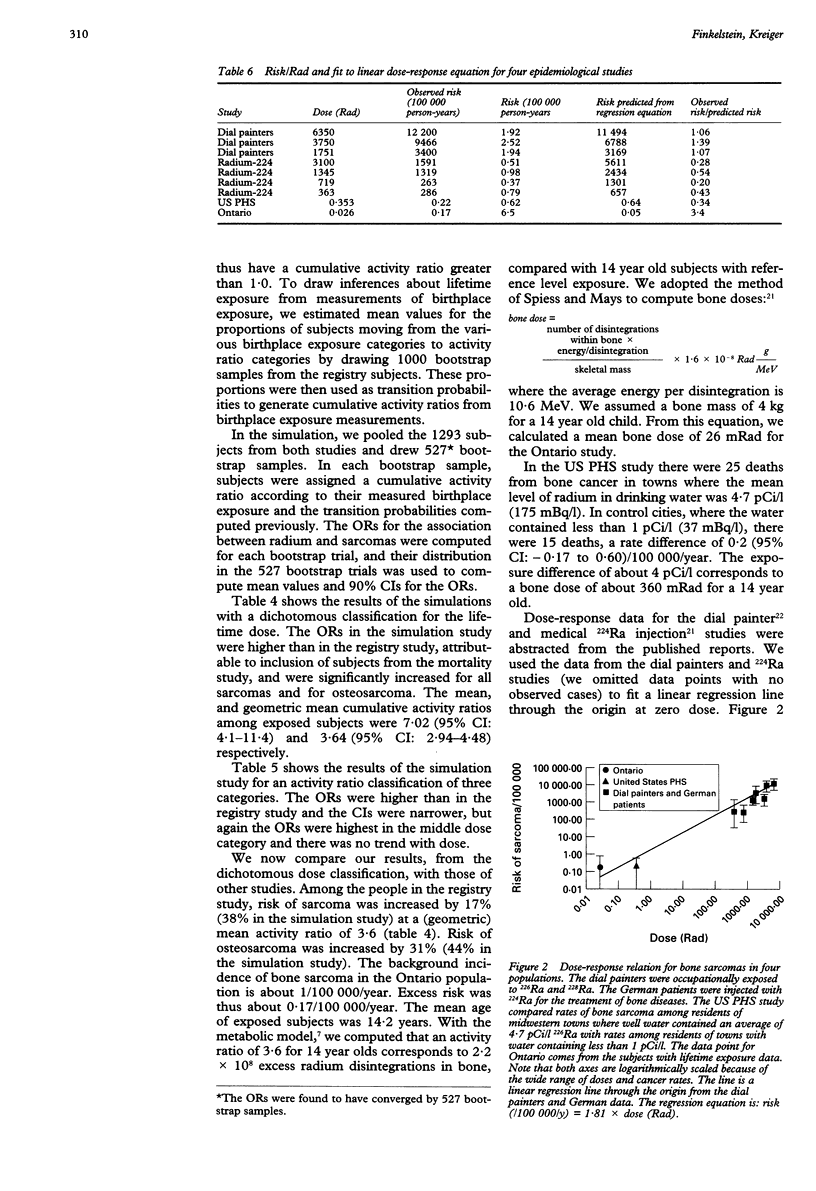
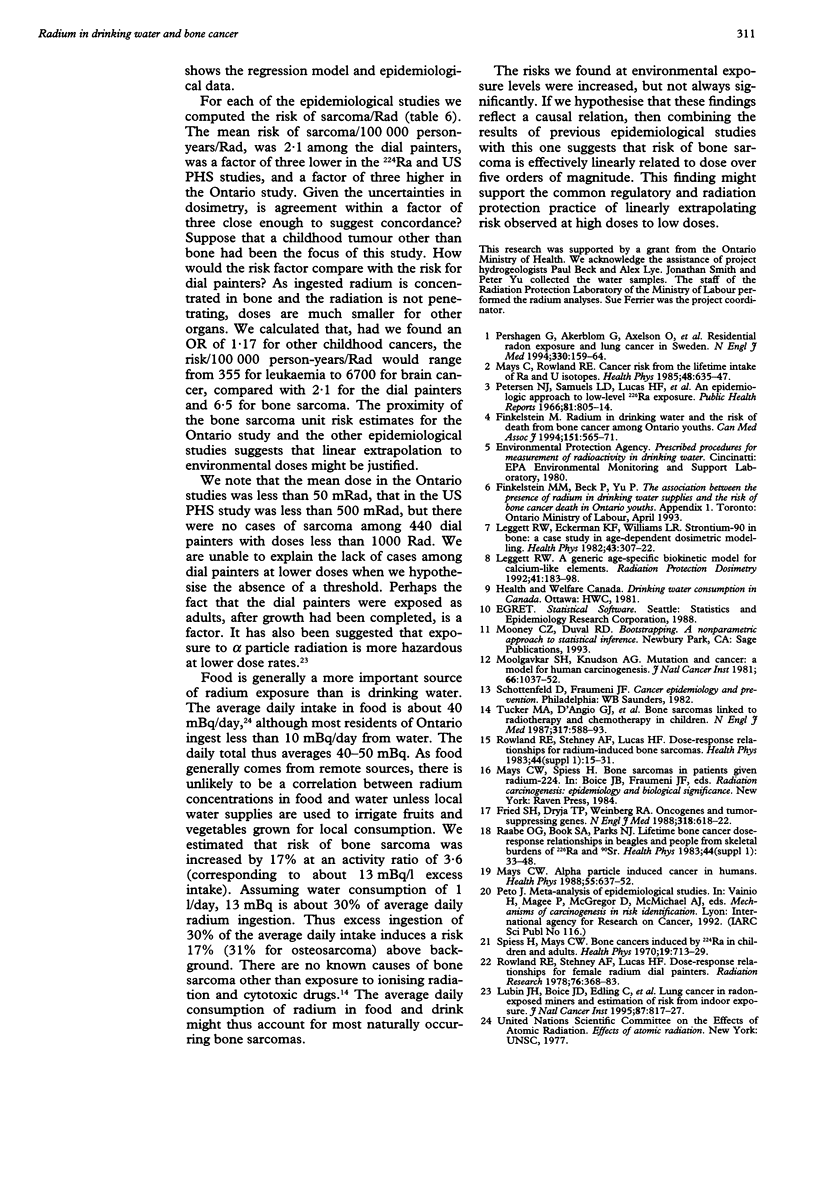
Selected References
These references are in PubMed. This may not be the complete list of references from this article.
- Finkelstein M. M. Radium in drinking water and the risk of death from bone cancer among Ontario youths. CMAJ. 1994 Sep 1;151(5):565–571. [PMC free article] [PubMed] [Google Scholar]
- Friend S. H., Dryja T. P., Weinberg R. A. Oncogenes and tumor-suppressing genes. N Engl J Med. 1988 Mar 10;318(10):618–622. doi: 10.1056/NEJM198803103181007. [DOI] [PubMed] [Google Scholar]
- Leggett R. W., Eckerman K. F., Williams L. R. Strontium-90 in bone: a case study in age-dependent dosimetric modeling. Health Phys. 1982 Sep;43(3):307–322. doi: 10.1097/00004032-198209000-00001. [DOI] [PubMed] [Google Scholar]
- Lubin J. H., Boice J. D., Jr, Edling C., Hornung R. W., Howe G. R., Kunz E., Kusiak R. A., Morrison H. I., Radford E. P., Samet J. M. Lung cancer in radon-exposed miners and estimation of risk from indoor exposure. J Natl Cancer Inst. 1995 Jun 7;87(11):817–827. doi: 10.1093/jnci/87.11.817. [DOI] [PubMed] [Google Scholar]
- Mays C. W. Alpha-particle-induced cancer in humans. Health Phys. 1988 Oct;55(4):637–652. doi: 10.1097/00004032-198810000-00005. [DOI] [PubMed] [Google Scholar]
- Mays C. W., Rowland R. E., Stehney A. F. Cancer risk from the lifetime intake of Ra and U isotopes. Health Phys. 1985 May;48(5):635–647. doi: 10.1097/00004032-198505000-00005. [DOI] [PubMed] [Google Scholar]
- Moolgavkar S. H., Knudson A. G., Jr Mutation and cancer: a model for human carcinogenesis. J Natl Cancer Inst. 1981 Jun;66(6):1037–1052. doi: 10.1093/jnci/66.6.1037. [DOI] [PubMed] [Google Scholar]
- Pershagen G., Akerblom G., Axelson O., Clavensjö B., Damber L., Desai G., Enflo A., Lagarde F., Mellander H., Svartengren M. Residential radon exposure and lung cancer in Sweden. N Engl J Med. 1994 Jan 20;330(3):159–164. doi: 10.1056/NEJM199401203300302. [DOI] [PubMed] [Google Scholar]
- Petersen N. J., Samuels L. D., Lucas H. F., Abrahams S. P. An epidemiologic approach to low-level radium 226 exposure. Public Health Rep. 1966 Sep;81(9):805–814. [PMC free article] [PubMed] [Google Scholar]
- Raabe O. G., Book S. A., Parks N. J. Lifetime bone cancer dose-response relationships in beagles and people from skeletal burdens of 226Ra and 90Sr. Health Phys. 1983;44 (Suppl 1):33–48. doi: 10.1097/00004032-198306001-00002. [DOI] [PubMed] [Google Scholar]
- Rowland R. E., Stehney A. F., Lucas H. F. Dose-response relationships for radium-induced bone sarcomas. Health Phys. 1983;44 (Suppl 1):15–31. doi: 10.1097/00004032-198306001-00001. [DOI] [PubMed] [Google Scholar]
- Rowland R. E., Stehney A. F., Lucas H. F., Jr Dose-response relationships for female radium dial workers. Radiat Res. 1978 Nov;76(2):368–383. [PubMed] [Google Scholar]
- Spiess H., Mays C. W. Bone cancers induced by 224 Ra (Th X) in children and adults. Health Phys. 1970 Dec;19(6):713–729. doi: 10.1097/00004032-197012000-00001. [DOI] [PubMed] [Google Scholar]
- Tucker M. A., D'Angio G. J., Boice J. D., Jr, Strong L. C., Li F. P., Stovall M., Stone B. J., Green D. M., Lombardi F., Newton W. Bone sarcomas linked to radiotherapy and chemotherapy in children. N Engl J Med. 1987 Sep 3;317(10):588–593. doi: 10.1056/NEJM198709033171002. [DOI] [PubMed] [Google Scholar]


